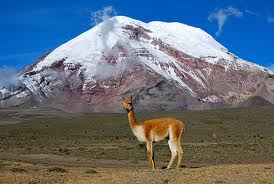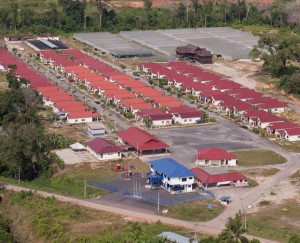The three pressing problems of the 21st century are:
- Human population growth
- Human caused climate change
- Human energy needs
Population growth is not limited to finding accommodation for those in already overcrowded and under serviced urban environments in the Developing World, but also includes the need to find sustainable food and energy sources for that population as it continues to grow and reaches a peak sometime after the mid-21st century.
We’ve grown from a planet of 3 billion people in 1950, a year after I was born, to over 7 billion in 2012. And much of that growth has happened in nation states in the Developing World. By mid-century our human population will exceed 9 billion with most of that growth coming from that same demographic.
Cultivable land is finite. Our environment is increasingly showing signs of instability. Our reliance on fossil fuels for energy is proving to be unsustainable. That means we need to address all of these challenges. Which brings us to the three stories that follow.
U.K. Project to Create Natural Symbiosis Between Bacteria and Cereal Crops to Increase Yields
Britain’s John Innes Centre has received funding from the Bill & Melinda Gates Foundation to create genetically modified cereal crops to increase yields by a factor of 5 or more. So has the Centre for Plant Biotechnology and Genomics, Technical University of Madrid. The focus is on dealing with Developing World food needs. The current green revolution has been powered by massive uses of fertilizer. That fertilizer has either come from byproducts of the fossil fuel industry, or been mined. The fertilizer has proven to be a boon to European and North American farmers while excess use has led to environmental pollution of fresh and saltwater environments.
The economic and environmental cost of fertilizer is making it a prohibitive product for the small farmers of the Developing World. They cannot afford it and they do not want to further contribute to environmental pollution particularly where freshwater resources are scarce.
Finding a way to create a second green revolution, without fertilizer, through genetically modifying food crops to naturally absorb the nitrogen from the air rather than from fertilizer, represents an important goal. To do this scientists in Britain and Spain are recruiting nitrogen-fixing bacteria in the soil and trying to develop symbiotic relationships between these bacteria and cereal crops.
Bacteria naturally infects plants through cracks and natural tunnels called infection threads. But in legumes like peas and beans, both very efficient at fixing nitrogen, the plants have developed root swellings and specialized nodules to host bacteria. Modifying cereal crops to display similar characteristics is the goal of the U.K. and Spanish researchers starting with corn (maize) because it is the most important food crop grown today in sub-Saharan Africa. Other cereal crops including wheat, barley and rice will follow.

Climate Change Comes to the Andes
In villages in the mountains of Ecuador the impact of climate change at elevations of 2,700 meters (8,800 plus feet) is apparent with changes to crop cycles, precipitation patterns, ground frost and mountain rivers. The change is described as sudden. On Mount Chimborazo, Ecuador’s tallest volcanic peak, glaciers are in retreat. That retreat is reducing the water used to generate electricity and service crops. What used to allow local farmers year-round harvests of beans no longer is possible. Corn, wheat and barley harvests have shrunk as well.
For the people of Central and South America the evidence of climate change is all around them. And with agriculture a huge component of the economy of this region it is expected to have an impact on food exports of between $32 to $54 billion annually by 2050. Adaptive measures to offset climate change include reverting to 3,000 year-old techniques of planting crops and using adobe brick with its insulating characteristics for home construction. In some parts of the Andes windmills have been constructed for power generation as streams are no longer suitable for hydroelectricity.
Preventive measures to offset climate changes will cost Central and South America $110 billion by 2050 according to the Inter-American Development Bank. Considering the region’s chronic poverty that is an enormous extra burden.

Aquaculture and Rapid Urbanization: How Malaysia is Adapting
Malaysia has built a model sustainable smart eco-village as a global template to address rural poverty and environmental sustainability. The 12-hectare (29 acre) site, Rimbunan Kaseh is northeast of the country’s capital, Kuala-Lumpur, and contains 100 energy-efficient homes (each 100 square meters or 1,000 square feet), solar panels for electricity, and a sophisticated closed-loop aquaculture system that serves as a food and water source.
Water cascades through a series of tanks. Fish raised in some of the tanks are used as a food source for the villagers. Other tanks contain small fish and algae, food for the larger fish. Filtered waste water and fish droppings feed local fields for growing crops. Plants are grown hydroponically to minimize water and fertilizer usage.
An inexpensive solution, the eco-village template gives its inhabitants a quality living environment, a great food source, and an opportunity for sustainable income from agricultural and aquaculture surpluses. Malaysia plans to replicate villages like Rimbunan Kaseh at 12 other sites throughout the country.

















Regarding the Natural Symbiosis article, there is a product available in Ontario called Myke which is basically a powdered form of the mycorrhizae fungus. It helps with absorption of phosphorus. On a sample of one, I used it when planting some shrubs some years ago and they are quite healthy.
I too use Mycorrhizal fungi when planting shrubs to help them get started. That’s what Myke is. The difference in what is being studied by the the UK and Spanish centres is to create plants that have attributes to cooperate symbiotically with nitrogen-fixing bacteria acting as a host for the bacteria in their root systems. Mycorrhizal fungi create invasive threads that interact with the root systems essentially increasing the roots ability to absorb from a much larger area of soil. If the fungi were to be hosted within the corn root then nothing would have to applied during planting. It would already be built in.
http://www.nasa.gov/topics/earth/features/greenland-melt.html
I’m sure you saw this today, too. It’s really getting disgustingly ignorant that anyone can deny the effect we’re having on the health of this planet…
Thanks for making me aware. This is a subject for a weekly headline.